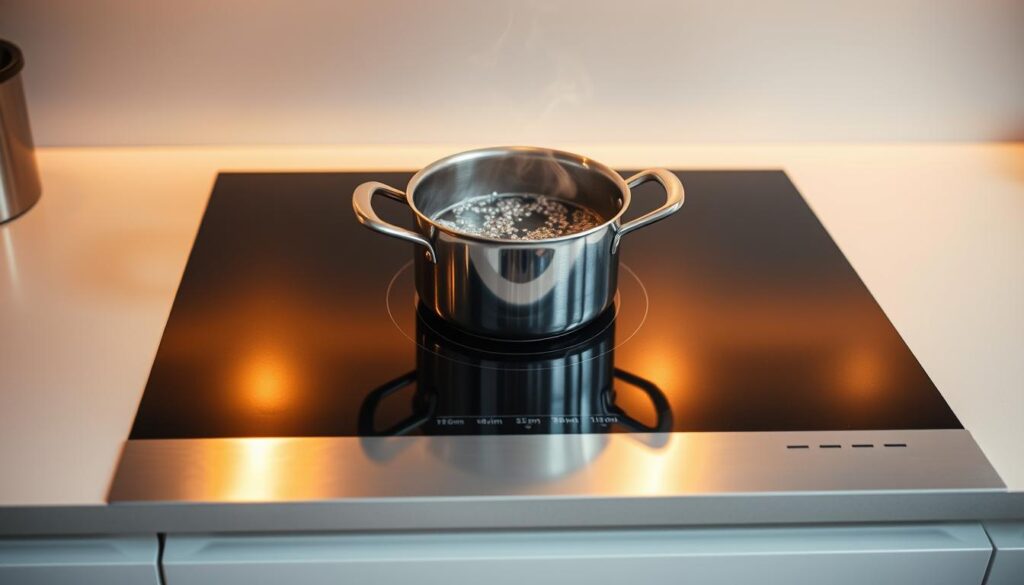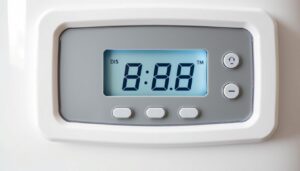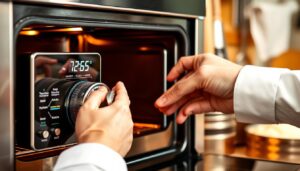Are you getting the most out of your induction cooking experience? Achieving precise cooking results is crucial for culinary enthusiasts and home cooks alike.
Understanding how to properly adjust your induction hob’s settings can significantly enhance your cooking precision. Modern induction hobs offer exceptional control, but factory settings may not always be optimised for your specific needs.
This comprehensive guide will walk you through the process, ensuring consistent and accurate power delivery to improve your overall cooking experience.
Key Takeaways
- Understand the importance of adjusting your induction hob’s settings for precise cooking.
- Learn how to optimise your hob’s power levels for better energy efficiency.
- Discover how proper calibration can enhance your cooking experience.
- Gain insights into achieving consistent and accurate cooking results.
- Master the techniques to elevate your cooking precision with your induction hob.
Understanding Induction Cooking Technology
To master induction cooking, it’s essential to understand the technology behind it. Induction cooking uses electromagnetic fields to heat cookware directly, offering precise control over the cooking process.
How Induction Hobs Work
Induction hobs generate an electromagnetic field when a compatible pan is placed on the cooking surface. This field induces an electrical current in the pan, heating it directly. The power output is calculated using the formula: Power = Voltage x Current, though sampling processes can introduce errors.
Power Level Significance in Induction Cooking
Power levels on induction hobs represent the intensity of the electromagnetic field, directly affecting cooking temperature. Most hobs offer between 9-20 levels, each suited for specific techniques. Understanding what each power level represents on your hob is crucial for achieving consistent results.
Why Calibrating Your Induction Hob Matters
Accurate calibration of your induction hob is vital for both cooking performance and energy efficiency. When your hob is properly calibrated, you can enjoy precise cooking results and significant energy savings.
Cooking Precision Benefits
With a calibrated induction hob, you achieve precise control over your cooking. This precision eliminates the guesswork involved in adjusting heat settings, allowing for more consistent cooking outcomes. The data shows that calibrated induction cooking can lead to more reliable results, making it ideal for both home cooks and professional chefs.
Energy Efficiency Advantages
A calibrated induction hob uses exactly the amount of power needed for each task, reducing energy waste. Studies indicate that calibrated induction cooking systems can reduce energy consumption by up to 15% compared to uncalibrated systems. This not only saves on energy costs but also extends the lifespan of your kitchen appliance.
To illustrate the benefits of calibration, consider the following comparison:
| Feature | Calibrated Hob | Uncalibrated Hob |
|---|---|---|
| Energy Consumption | Optimized power usage | Up to 15% more energy used |
| Cooking Precision | High precision control | Variable heat output |
| Appliance Lifespan | Extended lifespan | Reduced lifespan due to strain |
By calibrating your induction hob, you gain better control over your cooking process, access to valuable information about your hob’s performance, and the ability to make data-driven adjustments for optimal results.
Preparing to Calibrate Induction-Hob Power Levels
Calibrating your induction hob’s power levels begins with thorough preparation. To ensure a smooth and safe process, you need to gather the necessary tools and follow essential safety guidelines.
Required Tools and Materials
To calibrate your induction hob, you’ll need a few basic tools and materials. These include a thermometer, a pot or pan suitable for induction cooking, and a measuring jug or cup. Ensure your cookware is compatible with your induction hob to avoid any damage or inaccurate readings during the calibration process.
Safety Precautions Before Starting
Before calibrating your induction hob, take necessary safety precautions. Some key considerations include:
- Disconnecting your induction hob from the power supply before accessing internal components.
- Allowing the cooking surface to cool completely before beginning calibration.
- Wearing insulated gloves when handling hot cookware or testing hot surfaces.
By following these guidelines, you can ensure a safe and effective calibration process for your induction hob.
Step-by-Step Calibration Process
To achieve precise cooking, calibrating your induction hob’s power levels is essential. This process involves several key steps to ensure your hob operates at its best.
Accessing Your Hob’s Calibration Settings
Navigate through the calibration menu options to locate the power level adjustment parameters. Most systems allow you to adjust each level individually, giving you fine control over the entire range.
Testing Current Power Output
During real-time operation, the CPU applies stored calibration parameters to measure real-time current and voltage, providing accurate power output data for optimal performance.
Adjusting Power Parameters
Make small incremental changes (5-10%) rather than dramatic adjustments to avoid overcorrection. After each adjustment, save the data and test the result before making further changes as part of the process.
- Navigate through the calibration menu to locate adjustment parameters.
- Adjust each level individually for fine control.
- Save data after each adjustment.
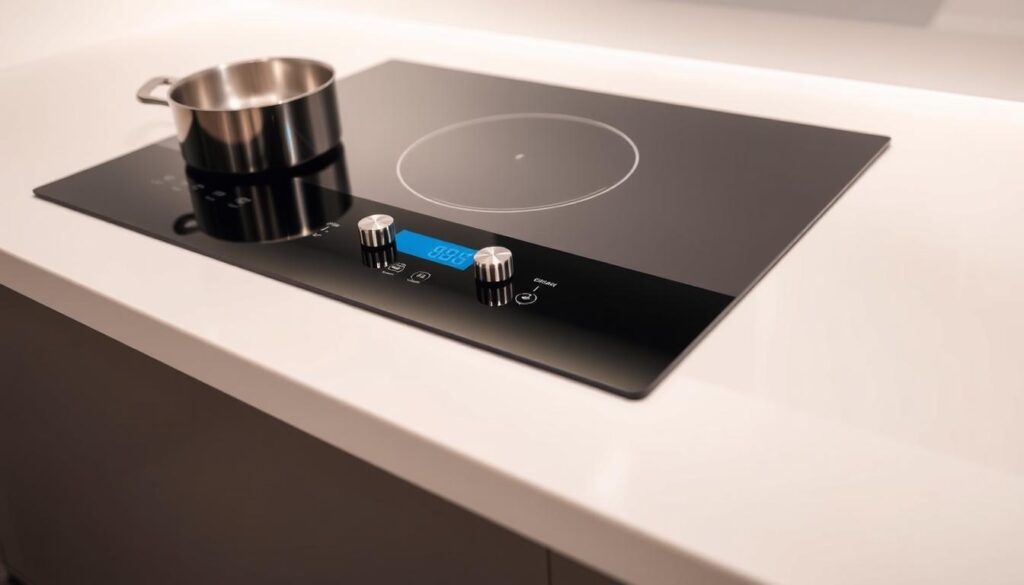
Testing Your Calibration Results
Once you’ve calibrated your induction hob, testing its performance will confirm if the adjustments were successful. This step is crucial to ensure that your hob is working as expected, providing you with the best cooking results.
The Water Boiling Test
The water boiling test is a straightforward method to verify your hob’s performance at high power levels. To conduct this test, fill a pot with water and place it on the hob. Set the hob to its highest power level and measure the time it takes for the water to boil. Compare this time with the manufacturer’s specifications or with previous results to assess any improvements.
The Simmer Test
The simmer test evaluates how well your induction hob maintains a steady low temperature, crucial for delicate cooking tasks. To perform this test:
- Fill a pot with water and bring it to a simmer (approximately 85-90°C).
- Set your hob to the recommended simmer level (usually 2-3 on most scales).
- Monitor the water temperature every 5 minutes for half an hour, recording any fluctuations.
- A well-calibrated hob should maintain the temperature within ±3°C throughout the test period.
- Pay attention to how the surface of the water moves—it should show tiny bubbles breaking the surface occasionally but never reach a rolling boil.
This test is particularly important for kitchen tasks that require gentle, consistent heat, such as melting chocolate or preparing custards.
Troubleshooting Common Calibration Issues
Even after successful calibration, some induction hob users may still face certain challenges. Calibration is a crucial step, but it’s not the end of the process. You may need to troubleshoot some common issues to ensure optimal performance.
Power Fluctuation Problems
Power fluctuations can be a significant issue. Traditional methods of power measurement can introduce errors due to resistors or transformers. To address this, you should check your hob’s control settings and ensure that the power output is consistent across all cooking zones.
- Verify that your hob is properly calibrated to avoid power fluctuations.
- Check the user manual for guidance on adjusting power parameters.
Uneven Heating Solutions
Uneven heating across cooking zones may indicate individual calibration issues. To resolve this, test each zone separately using identical cookware and water volumes.
| Cooking Zone | Water Volume (ml) | Heating Time (seconds) |
|---|---|---|
| Zone 1 | 500 | 120 |
| Zone 2 | 500 | 125 |
| Zone 3 | 500 | 122 |
Some induction hobs allow zone-specific calibration through the service menu. Ensure your cookware has a flat bottom and is made from suitable ferromagnetic material. Warped or thin-bottomed pans can create the impression of uneven heating.
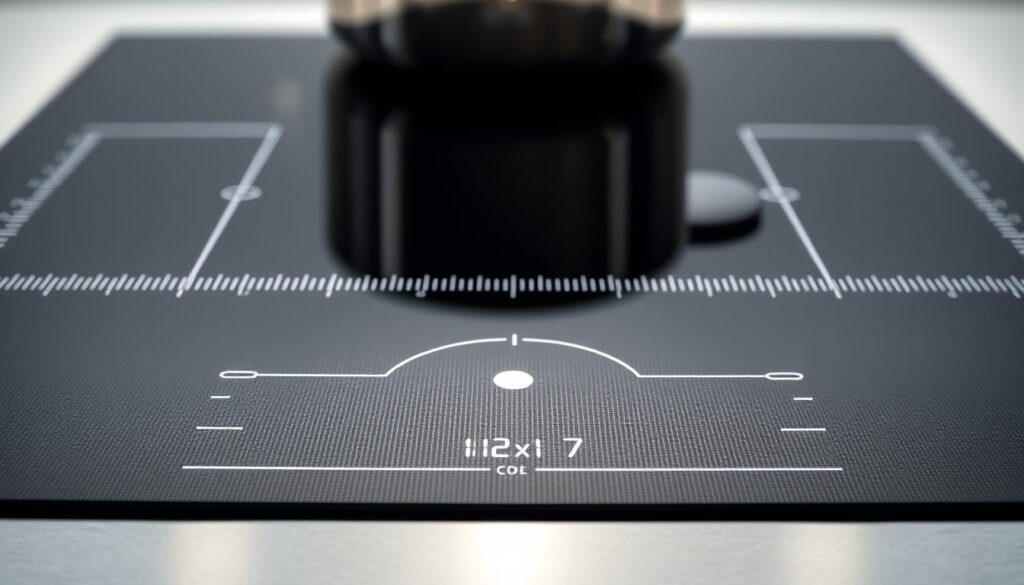
Creating Your Personal Power Level Guide
To maximise your induction cooktop’s performance, it’s crucial to develop a personalised power level guide. This guide will help you tailor your cooking experience to your specific cookware and cooking techniques.
Documenting Optimal Settings
You should start by documenting the optimal power settings for different cooking tasks. This involves testing your most frequently used pots and pans to determine their performance at various power levels.
- Test different cookware materials and designs to understand their unique responses to induction cooking.
- Note which zone size works best with each pot or pan in your kitchen.
Fine-Tuning for Specific Cookware
Fine-tuning your induction cooking involves paying special attention to the surface contact between your cookware and the cooktop, as this affects heating efficiency. Different materials, such as cast iron or stainless steel with an induction-compatible base, may require different power settings.
| Cookware Material | Recommended Power Setting | Heating Efficiency |
|---|---|---|
| Cast Iron | Lower | High |
| Stainless Steel with Induction Base | Medium to High | Very High |
By creating a cookware-specific guide and noting any special details about how quickly each piece responds to power changes, you can ensure you’re getting the most from your induction product’s design capabilities.
Conclusion
Achieving precise control over your induction hob’s power levels revolutionizes your cooking. By calibrating your hob, you’ll enjoy improved cooking results, energy efficiency, and appliance longevity. This process isn’t a one-time task; periodic adjustments may be necessary as your hob ages or your cooking needs evolve.
Keep your calibration guide and testing data accessible for future reference. Share your findings with other kitchen users to ensure consistent results. As induction technology continues to evolve, you’ll appreciate the sophisticated control options and user interfaces. Different cooking zones may require individual attention, making your calibrated hob one of the most valuable appliances in your modern kitchen.
With time, you’ll develop an intuitive understanding of how different power levels affect various cooking techniques, empowering you to achieve professional-quality results from the comfort of your home kitchen.
